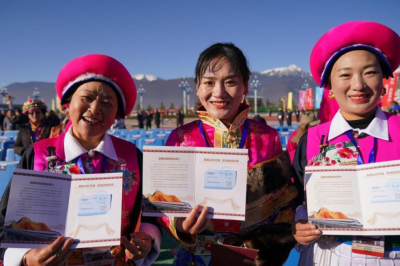| May 10,2017--It is at the end of April. Driving along the Tibet Shannan section of the 318 National Highway, you will find beauty is all around you. From afar, the green plants by the roadside contrast with the white snow on the mountain tops. It's hard to imagine that many years ago it was still a desolate beach here.
With an average altitude of more than 4,000 meters and rivers and lakes scattered all along the plateau, Tibet is well known as "Asia's water tower" and the "world's climate regulator".
Therefore, protecting environment means protecting productivity; improving environment means developing productivity; the green mountains and clear rivers are like golden and silver hills, so is a world with ice and snow. "This has always been the guiding work strategy of the Tibet Autonomous Region", said Ding Yexian, Executive Vice Chairman of TAR.
Make the sky bluer, land greener and water clearer
In 2014, in order to conserve water, prevent wind and fix sand, Tibet Autonomous Region launched an afforestation project, which involved an area concentrating more than 80% of Tibet's population in the river valley of the "Six Rivers", namely, Brahmaputra River, Nu River, Lhasa River, Nianchu River, Yalong River and Shiquan River. Take the Brahmaputra River valley (Qushui to Sangri part) as an example, the number of days of disastrous dusty weather reduced from 85 in 2000 to 32 in 2015. |
- Home
- News Tibet |Exclusive |China |World |Related News |Latest
- Documents White Papers |Others
- Photo Politics |Economy & Society |Culture & Religion |Human & Nature |Beautiful Tibet |Other Tibetan-Inhabited Area |Exchanges |Related
- Video News |Documentary |Micro-Video |Entertainment
- Art
- Tourism
- In Focus
- About Tibet






